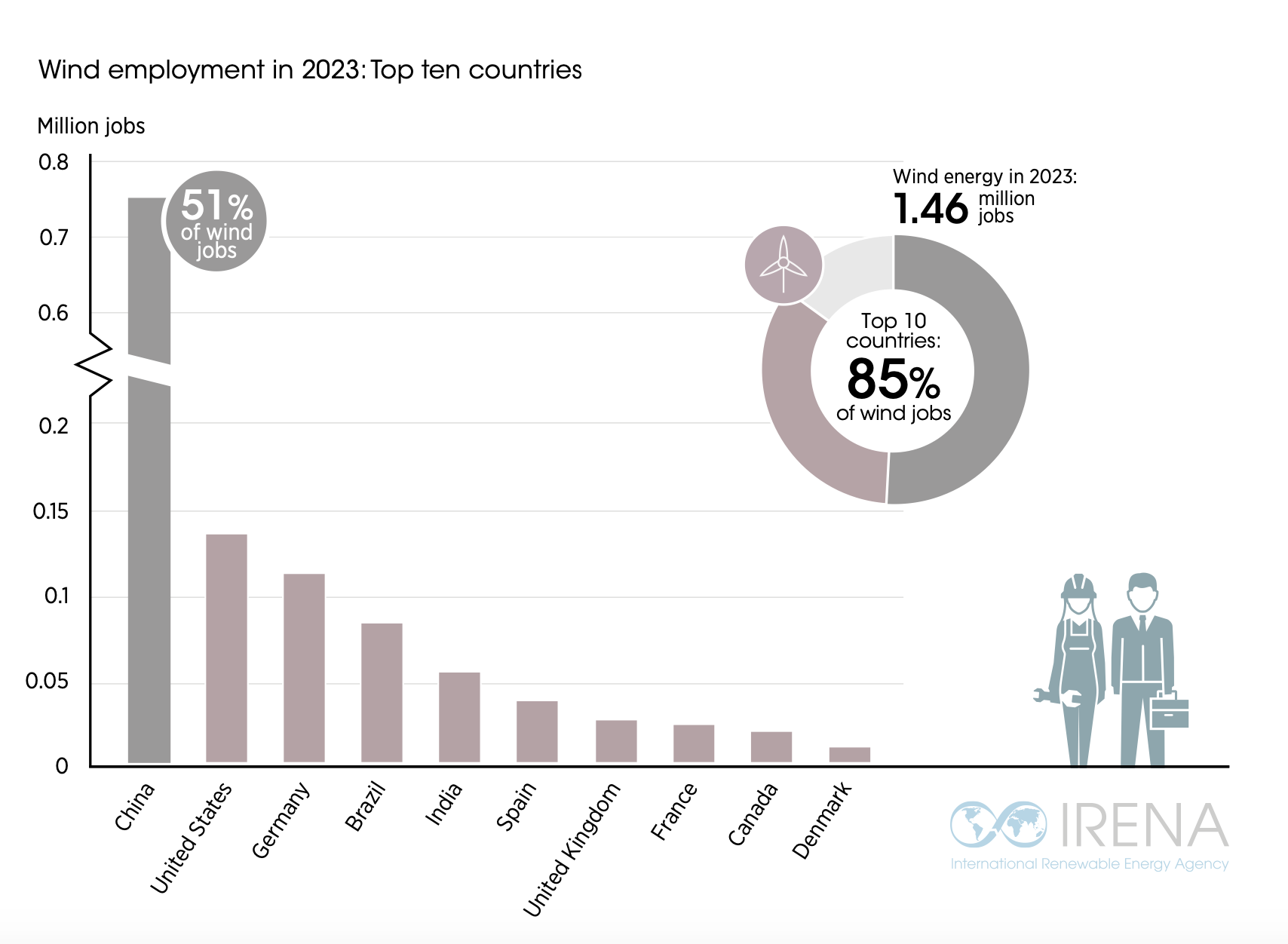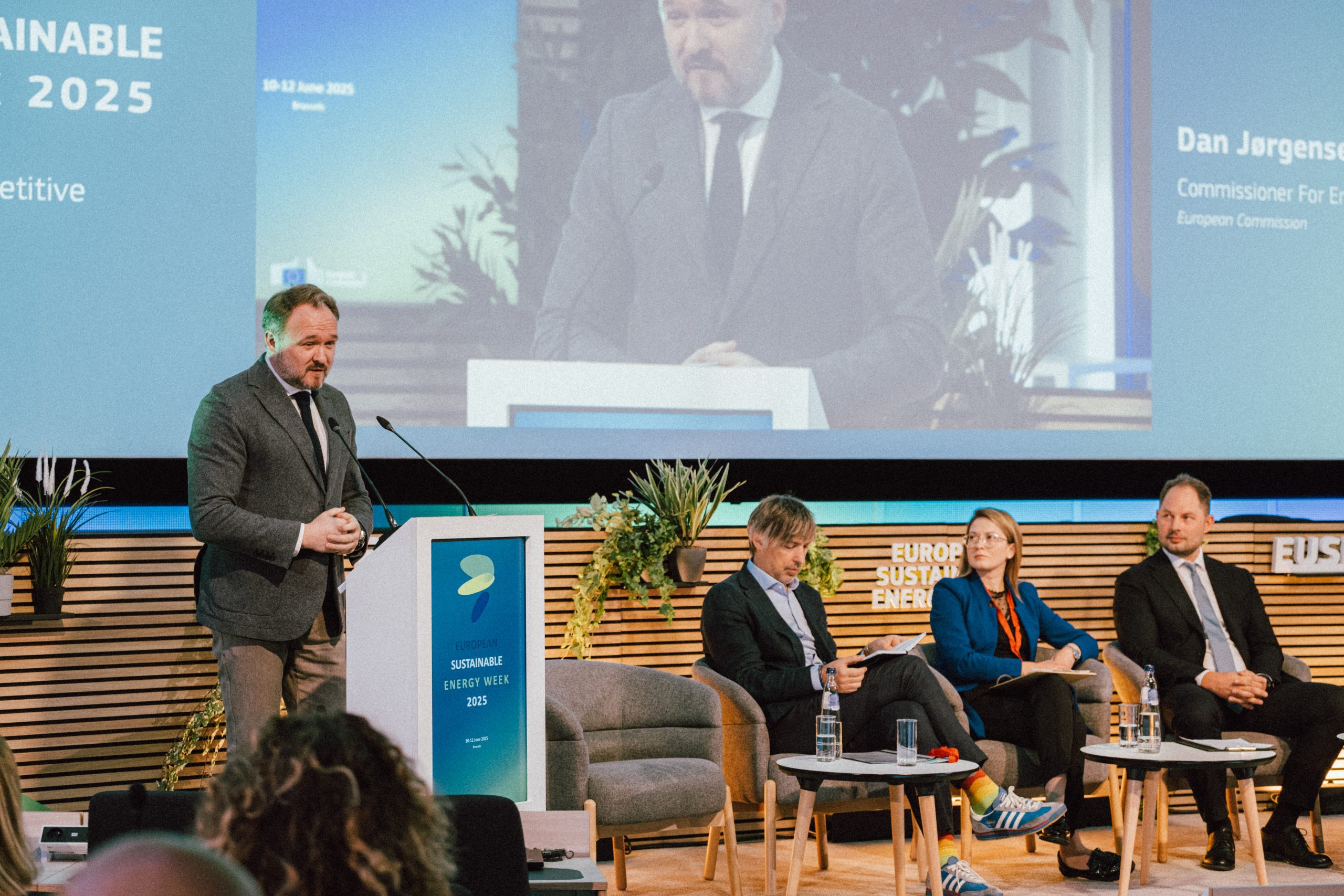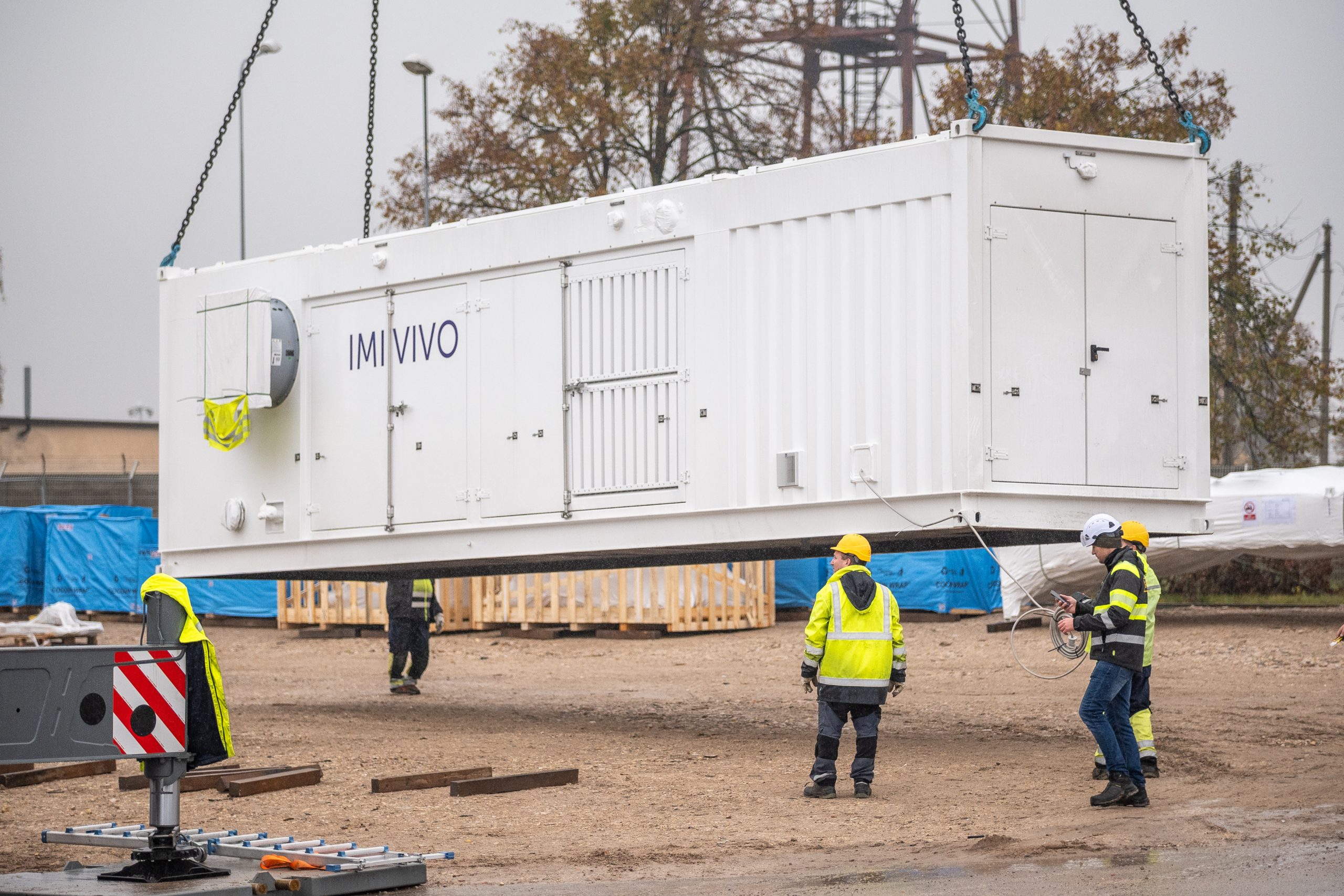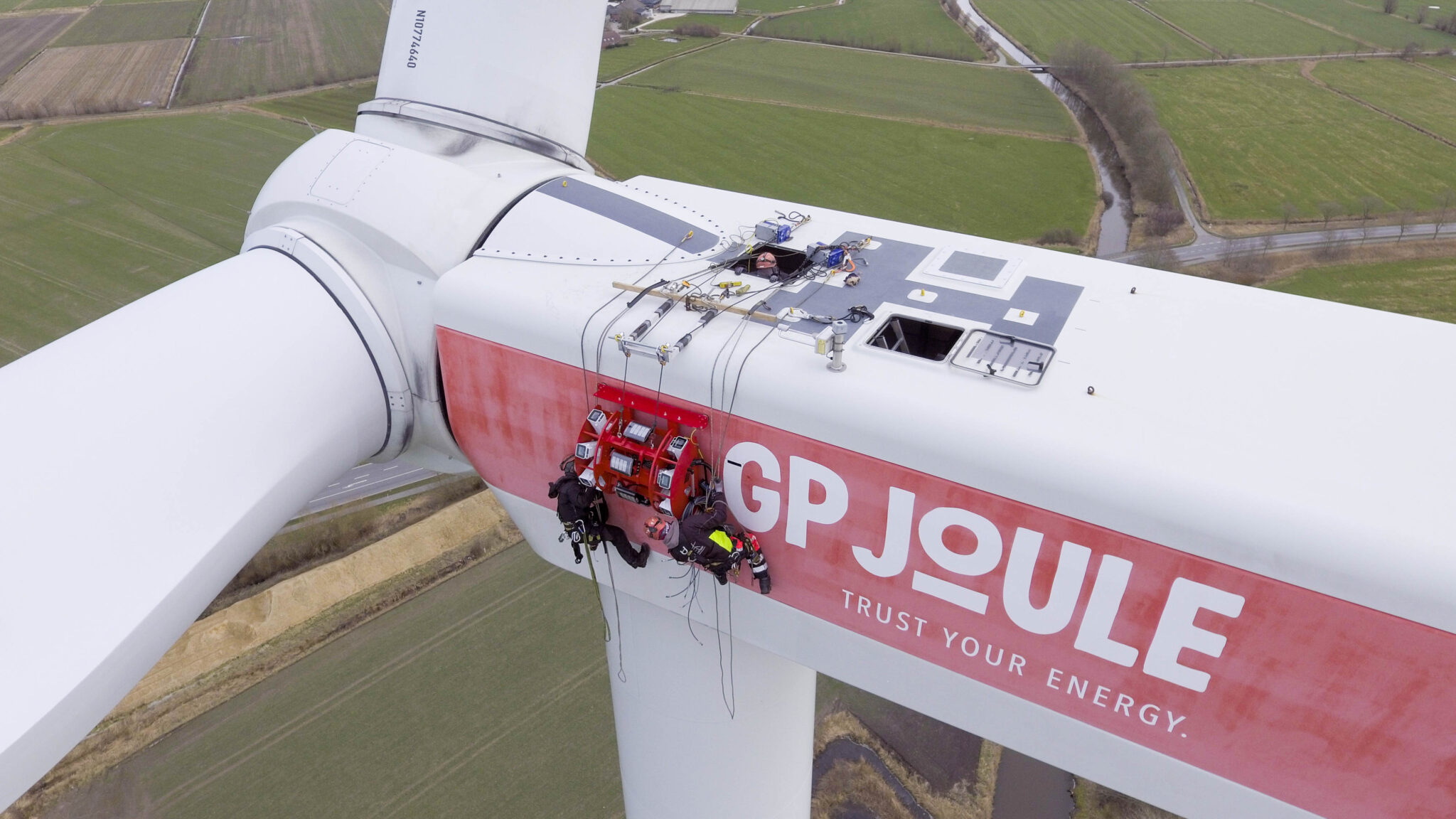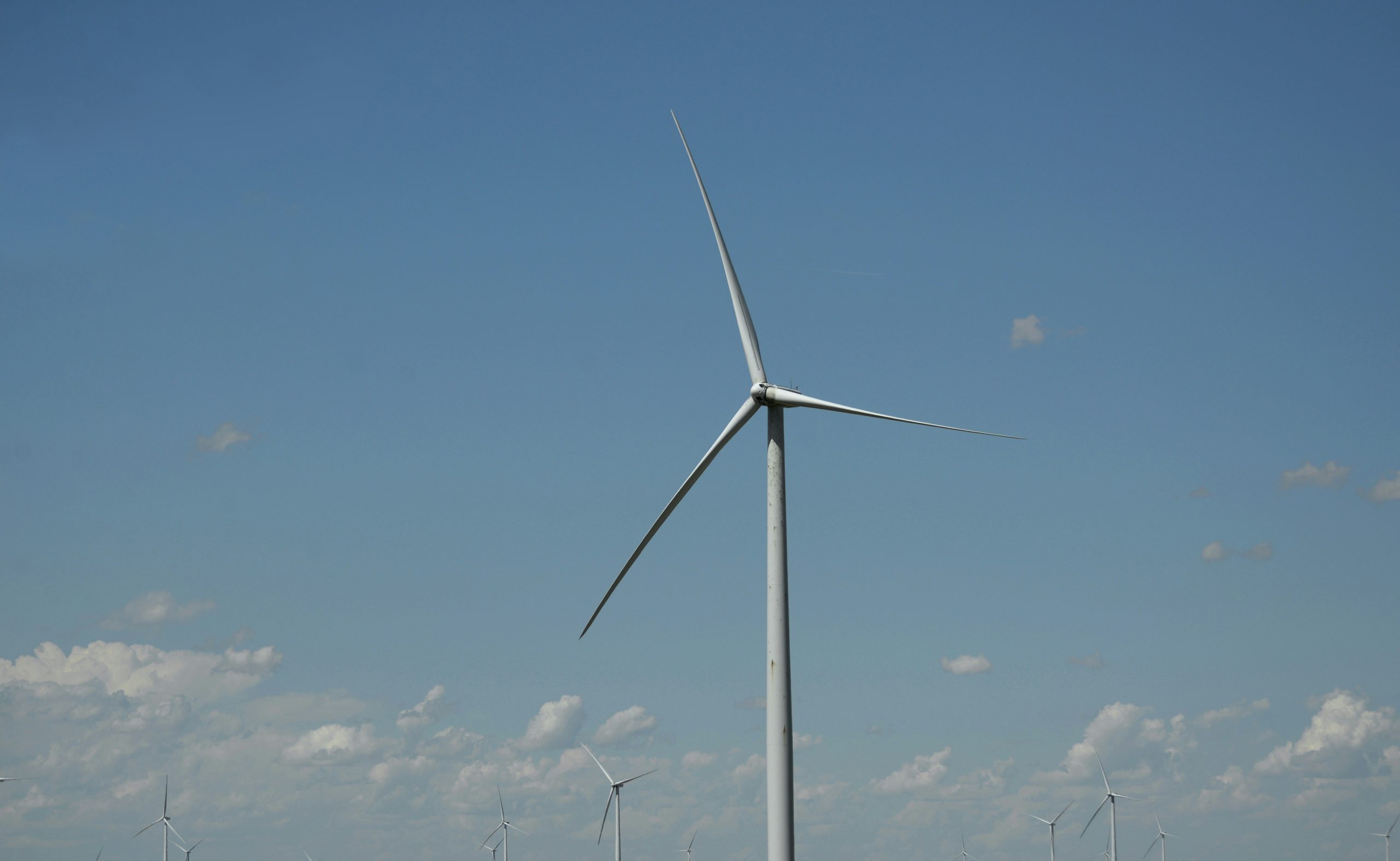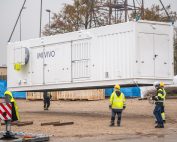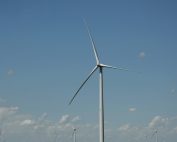Wind power is playing an increasingly important role in the global energy transition, becoming one of the key sectors supporting the development of renewable energy sources (RES). In 2023, the sector installed a record 115 GW of new capacity, a significant increase on the previous year and surpassing the previous record set in 2020. Employment in the wind sector reached 1.5 million jobs globally, confirming the growing importance of this technology in the green economy.
China maintains its clear dominance in the wind power industry, accounting for 65.5% of global new installations in 2023, with 75.9 GW. This is more than the total installed capacity of the rest of the top 10 countries, which include the US, Brazil, Germany and India. China not only leads in the installation of new wind turbines, but also dominates in the production of turbine components – controlling 60% of the global blade market, 65% of the generator market and as much as 75% of the gearbox market.
Wind power, both onshore and offshore, not only contributes to the reduction of CO2 emissions, but drives economic development, especially in countries investing in equipment manufacturing and infrastructure. In Europe, which accounts for 21% of global employment in the sector, wind power remains a key technology in the fight for climate neutrality, and local turbine and component manufacturing companies continue to play an important role in the global market, despite increased competition from China.
Global employment trends in the RES sector
According to a report published by the International Renewable Energy Agency (IRENA) and the International Labour Organisation (ILO), the renewable energy industry saw record employment growth in 2023, reaching 16.2 million jobs worldwide. This is an increase of 18% compared to 2022, driven by the rapid expansion of generation capacity and the expansion of RES equipment manufacturing, particularly in the solar and wind sectors.
China by far dominates global RES employment, accounting for 46% of all jobs (7.4 million). This is followed by the European Union (1.8 million), Brazil (1.56 million) and the United States and India, which employ close to one million people each. The photovoltaic sector remains the fastest growing segment, offering 7.2 million jobs, most of which – 4.6 million – are in China.
Challenges for equitable development
However, the IRENA report highlights inequalities in the global distribution of RES investment and jobs. Africa, despite its huge renewable energy potential, receives only a small share of global investment, translating into just 324,000 jobs across the RES sector in 2023. The report’s authors highlight that decentralised energy solutions, such as grid-independent systems, can play a key role in improving energy access and creating jobs in rural areas.
One of the key findings of the report is the need to invest in education, training and skills development to adapt workers to new roles in the green energy sector. Women, who currently make up 32% of the global RES workforce, are still underrepresented, requiring support for policies that encourage gender equality and diversity in the workforce.
The IRENA report clearly shows that the development of renewable energy, including wind energy in particular, is a key component of the global energy transition. The rapid growth of employment in this industry is not only a step towards decarbonising the economy, but also creates new economic and social opportunities. However, greater engagement in marginalised regions and support for employment diversity are needed to ensure a fair and sustainable transition.
Entire report: https://www.irena.org/-/media/Files/IRENA/Agency/Publication/2024/Oct/IRENA_Renewable_energy_and_jobs_2024.pdf
Source: IRENA
